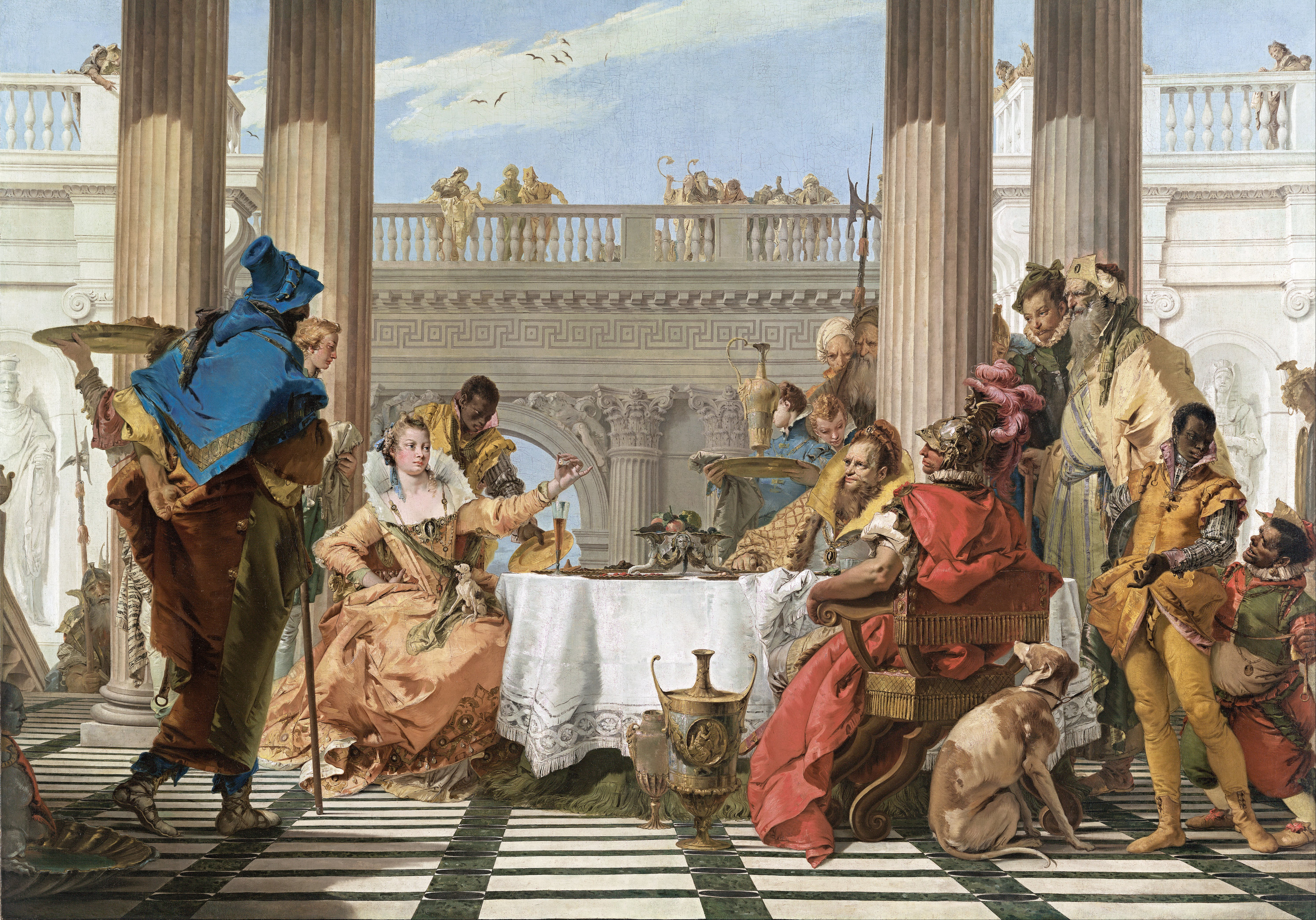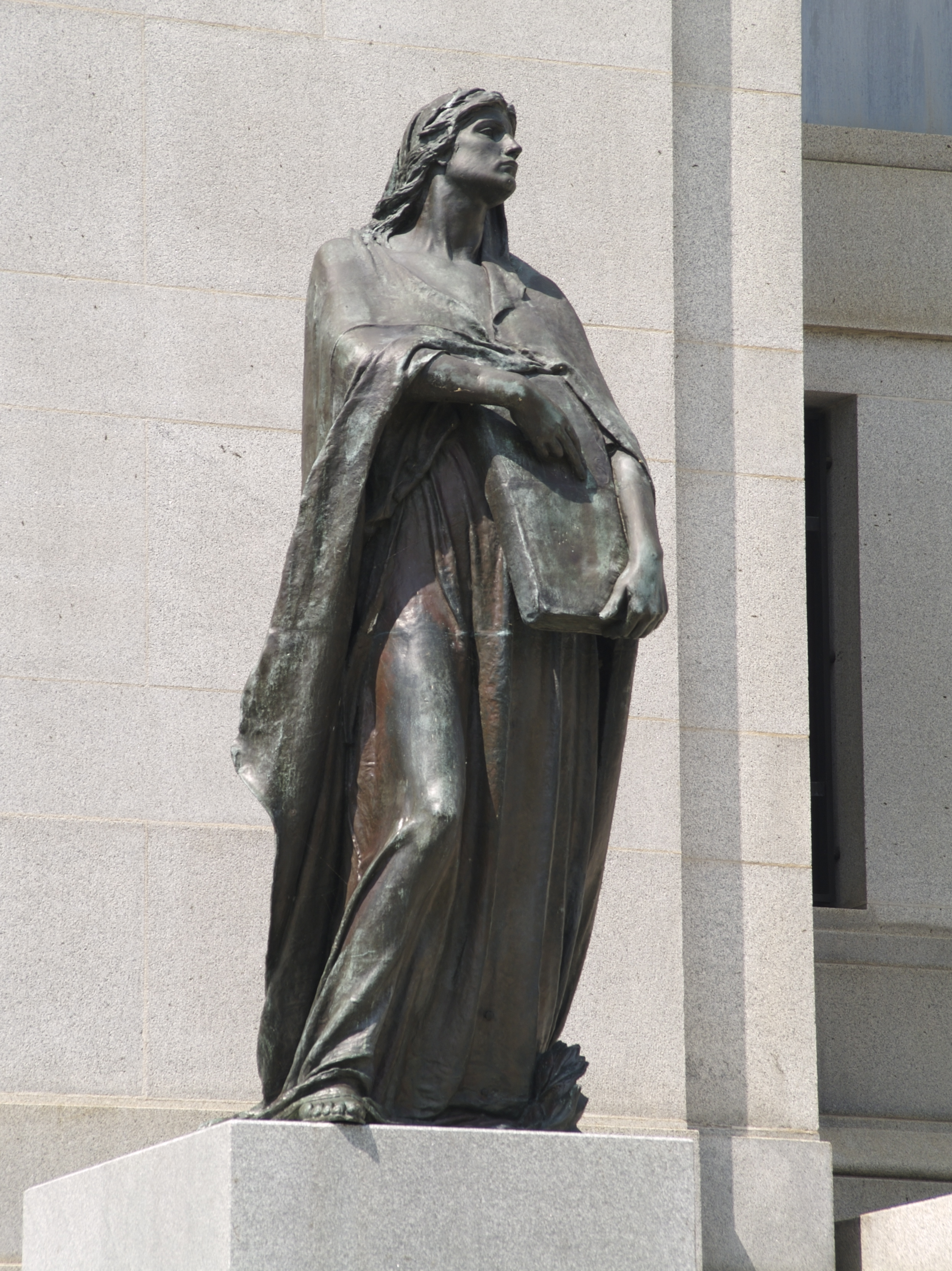|
Time Unveiling Truth (Tiepolo)
''Time Unveiling Truth'' is a painting c. 1745–1750 by the Italian painter Tiepolo. It is now on display in the Museum of Fine Arts, Boston in Boston, Massachusetts. Father Time is shown on a chariot with a scythe uncovering the body of a female figure of Truth. The work remained in Verona until the 19th century, when it was transferred to Paris and resold several times, until it was bought by Rudolph Heinemann in 1960, who took it to New York. In 1961, it was sold to the Museum of Fine Arts in Boston, where the work remains today. Provenance It was sold by Rudolph J. Heinemann to the Museum of Fine Arts of Boston for $210,000, on December 13, 1961. See also * '' Truth Unveiled by Time'', sculpture by Gian Lorenzo Bernini Gian Lorenzo (or Gianlorenzo) Bernini (, , ; Italian Giovanni Lorenzo; 7 December 159828 November 1680) was an Italian sculptor and architect. While a major figure in the world of architecture, he was more prominently the leading sculptor of his ..., 16 ... [...More Info...] [...Related Items...] OR: [Wikipedia] [Google] [Baidu] |
Giovanni Battista Tiepolo
Giovanni Battista Tiepolo ( , ; March 5, 1696 – March 27, 1770), also known as Giambattista (or Gianbattista) Tiepolo, was an Italian painter and printmaker from the Republic of Venice who painted in the Rococo style, considered an important member of the 18th-century Venetian school. He was prolific, and worked not only in Italy, but also in Germany and Spain. Giovan Battista Tiepolo, together with Giambattista Pittoni, Canaletto, Giovan Battista Piazzetta, Giuseppe Maria Crespi, and Francesco Guardi are considered the traditional Old Masters of that period. Successful from the beginning of his career, he has been described by Michael Levey as "the greatest decorative painter of eighteenth-century Europe, as well as its most able craftsman." Biography ''The Glory of St. Dominic'', 1723 Early life (1696–1726) Born in Venice, he was the youngest of six children of Domenico and Orsetta Tiepolo. His father was a small shipping merchant who belonged to a family th ... [...More Info...] [...Related Items...] OR: [Wikipedia] [Google] [Baidu] |
Boston
Boston (), officially the City of Boston, is the state capital and most populous city of the Commonwealth of Massachusetts, as well as the cultural and financial center of the New England region of the United States. It is the 24th- most populous city in the country. The city boundaries encompass an area of about and a population of 675,647 as of 2020. It is the seat of Suffolk County (although the county government was disbanded on July 1, 1999). The city is the economic and cultural anchor of a substantially larger metropolitan area known as Greater Boston, a metropolitan statistical area (MSA) home to a census-estimated 4.8 million people in 2016 and ranking as the tenth-largest MSA in the country. A broader combined statistical area (CSA), generally corresponding to the commuting area and including Providence, Rhode Island, is home to approximately 8.2 million people, making it the sixth most populous in the United States. Boston is one of the oldest ... [...More Info...] [...Related Items...] OR: [Wikipedia] [Google] [Baidu] |
Museum Of Fine Arts, Boston
The Museum of Fine Arts (often abbreviated as MFA Boston or MFA) is an art museum in Boston, Massachusetts. It is the 20th-largest art museum in the world, measured by public gallery area. It contains 8,161 paintings and more than 450,000 works of art, making it one of the most comprehensive collections in the Americas. With more than 1.2 million visitors a year, it is the 52nd–most visited art museum in the world . Founded in 1870 in Copley Square, the museum moved to its current Fenway location in 1909. It is affiliated with the School of the Museum of Fine Arts at Tufts. History 1870–1907 The Museum of Fine Arts was founded in 1870 and was initially located on the top floor of the Boston Athenaeum. Most of its initial collection came from the Athenæum's Art Gallery. Francis Davis Millet, a local artist, was instrumental in starting the art school affiliated with the museum, and in appointing Emil Otto Grundmann as its first director. In 1876, the museum moved to a h ... [...More Info...] [...Related Items...] OR: [Wikipedia] [Google] [Baidu] |
Massachusetts
Massachusetts (Massachusett language, Massachusett: ''Muhsachuweesut [Massachusett writing systems, məhswatʃəwiːsət],'' English: , ), officially the Commonwealth of Massachusetts, is the most populous U.S. state, state in the New England region of the Northeastern United States. It borders on the Atlantic Ocean and Gulf of Maine to the east, Connecticut and Rhode Island to the south, New Hampshire and Vermont to the north, and New York (state), New York to the west. The state's capital and List of municipalities in Massachusetts, most populous city, as well as its cultural and financial center, is Boston. Massachusetts is also home to the urban area, urban core of Greater Boston, the largest metropolitan area in New England and a region profoundly influential upon American History of the United States, history, academia, and the Economy of the United States, research economy. Originally dependent on agriculture, fishing, and trade. Massachusetts was transformed into a manuf ... [...More Info...] [...Related Items...] OR: [Wikipedia] [Google] [Baidu] |
Father Time
Father Time is a personification of time. In recent centuries he is usually depicted as an elderly bearded man, sometimes with wings, dressed in a robe and carrying a scythe and an hourglass or other timekeeping device. As an image, "Father Time's origins are curious." The ancient Greeks themselves began to associate ''chronos'', their word for time, with the agricultural god Cronos, who had the attribute of a harvester's sickle. The Romans equated Cronos with Saturn, who also had a sickle, and was treated as an old man, often with a crutch. The wings and hourglass were early Renaissance additions and he eventually became a companion of the Grim Reaper, personification of Death, often taking his scythe. He may have as an attribute a snake with its tail in its mouth, an ancient Egyptian symbol of eternity. New Year Around New Year's Eve, the media (in particular editorial cartoons) use the convenient trope of Father Time as the personification of the previous year (or "th ... [...More Info...] [...Related Items...] OR: [Wikipedia] [Google] [Baidu] |
Chariot
A chariot is a type of cart driven by a charioteer, usually using horses to provide rapid motive power. The oldest known chariots have been found in burials of the Sintashta culture in modern-day Chelyabinsk Oblast, Russia, dated to c. 2000 BCE. The critical invention that allowed the construction of light, horse-drawn chariots was the spoked wheel. The chariot was a fast, light, open, two-wheeled conveyance drawn by two or more horses that were hitched side by side, and was little more than a floor with a waist-high guard at the front and sides. It was initially used for ancient warfare during the Bronze and Iron Ages, but after its military capabilities had been superseded by light and heavy cavalries, chariots continued to be used for travel and transport, in processions, for games, and in races. Etymology The word "chariot" comes from the Latin term ''carrus'', a loanword from Gaulish. In ancient Rome and some other ancient Mediterranean civilizations, a ''biga'' re ... [...More Info...] [...Related Items...] OR: [Wikipedia] [Google] [Baidu] |
Scythe
A scythe ( ) is an agricultural hand tool for mowing grass or harvesting crops. It is historically used to cut down or reap edible grains, before the process of threshing. The scythe has been largely replaced by horse-drawn and then tractor machinery, but is still used in some areas of Europe and Asia. Reapers are bladed machines that automate the cutting of the scythe, and sometimes subsequent steps in preparing the grain or the straw or hay. The word "scythe" derives from Old English ''siðe''. In Middle English and later, it was usually spelt ''sithe'' or ''sythe''. However, in the 15th century some writers began to use the ''sc-'' spelling as they thought (wrongly) the word was related to the Latin ''scindere'' (meaning "to cut"). Nevertheless, the ''sithe'' spelling lingered and notably appears in Noah Webster's dictionaries. A scythe consists of a shaft about long called a ''snaith'', ''snath'', ''snathe'' or ''sned'', traditionally made of wood but now sometimes me ... [...More Info...] [...Related Items...] OR: [Wikipedia] [Google] [Baidu] |
Truth
Truth is the property of being in accord with fact or reality.Merriam-Webster's Online Dictionarytruth 2005 In everyday language, truth is typically ascribed to things that aim to represent reality or otherwise correspond to it, such as beliefs, propositions, and declarative sentences. Truth is usually held to be the opposite of falsehood. The concept of truth is discussed and debated in various contexts, including philosophy, art, theology, and science. Most human activities depend upon the concept, where its nature as a concept is assumed rather than being a subject of discussion; these include most of the sciences, law, journalism, and everyday life. Some philosophers view the concept of truth as basic, and unable to be explained in any terms that are more easily understood than the concept of truth itself. Most commonly, truth is viewed as the correspondence of language or thought to a mind-independent world. This is called the correspondence theory of truth. Various theo ... [...More Info...] [...Related Items...] OR: [Wikipedia] [Google] [Baidu] |
Rudolph J
Rudolph or Rudolf may refer to: People * Rudolph (name), the given name including a list of people with the name Religious figures * Rudolf of Fulda (died 865), 9th century monk, writer and theologian * Rudolf von Habsburg-Lothringen (1788–1831), Archbishop of Olomouc and member of the House of Habsburg-Lorraine Royalty and nobility *Rudolph I (other) * Rudolph II (other) * Rudolph III (other) * Rudolph of France (died 936) * Rudolph I of Germany (1218–1291) * Rudolf II, Holy Roman Emperor (1552–1612) * Rudolph, Prince of Anhalt-Zerbst (1576–1621) * Rudolf, Crown Prince of Austria (1858–1889), son and heir of Emperor Franz Joseph I of Austria and Empress Elisabeth of Austria (died at Mayerling) Places * Rudolph Glacier, Antarctica * Rudolph, South Dakota, US * Rudolph, Wisconsin, US, a village * Rudolph (town), Wisconsin, adjacent to the village * Rudolf Island, northernmost island of Europe * Lake Rudolf, now Lake Turkana, in Kenya ... [...More Info...] [...Related Items...] OR: [Wikipedia] [Google] [Baidu] |
Truth Unveiled By Time (Bernini)
''Truth Unveiled by Time'' is a marble sculpture by Italian artist Gian Lorenzo Bernini. Executed between 1645 and 1652, Bernini intended to show ''Truth'' allegorically as a naked young woman being unveiled by a figure of ''Time'' above her, but the figure of ''Time'' was never executed. Bernini still expressed a wish to add the figure as late as 1665. Bernini's rationale for creating the work was, according to his son Domenico, as a sculptural retort to attacks from opponents criticising his failed project to build two towers onto the front of St. Peter's Basilica. Cracks had appeared in the facade due to the inability of the foundations to support the towers and Bernini's architectural expansion received the blame, although historians are unsure as to the validity of this legend. Bernini began the preparatory work for ''Truth Unveiled by Time'' in 1645, during the critical period after the death of his main patron pope Urban VIII, and the figure of Truth was largely complet ... [...More Info...] [...Related Items...] OR: [Wikipedia] [Google] [Baidu] |
Gian Lorenzo Bernini
Gian Lorenzo (or Gianlorenzo) Bernini (, , ; Italian Giovanni Lorenzo; 7 December 159828 November 1680) was an Italian sculptor and architect. While a major figure in the world of architecture, he was more prominently the leading sculptor of his age, credited with creating the Baroque style of sculpture. As one scholar has commented, "What Shakespeare is to drama, Bernini may be to sculpture: the first pan-European sculptor whose name is instantaneously identifiable with a particular manner and vision, and whose influence was inordinately powerful ..." In addition, he was a painter (mostly small canvases in oil) and a man of the theater: he wrote, directed and acted in plays (mostly Carnival satires), for which he designed stage sets and theatrical machinery. He produced designs as well for a wide variety of decorative art objects including lamps, tables, mirrors, and even coaches. As an architect and city planner, he designed secular buildings, churches, chapels, and publi ... [...More Info...] [...Related Items...] OR: [Wikipedia] [Google] [Baidu] |
François Lemoyne
François Lemoyne or François Le Moine (; 1688 – 4 June 1737) was a French rococo painter. He was a winner of the Prix de Rome, professor of the Académie de peinture et de sculpture, and ''Premier peintre du Roi'' to Louis XV. He was tutor to Charles-Joseph Natoire and François Boucher. Throughout his career, Lemoyne sought to be seen as the heir to Charles Le Brun and the leading painter of his generation, titles also vied for by his rival Jean-François de Troy (1679–1752). Lemoyne's work and talent, notably plied in Versailles, earned him the esteem of his contemporaries and the name of the "new Le Brun". He collaborated with or worked alongside other artists of the era, including Nonotte, Gilles Dutilleul, Charles de La Fosse, and Coypel. He took his own life in 1737, at the height of his career. With his death, the fashion of large allegorical ceilings disappeared. Biography Lemoyne was born in Paris in 1688 and studied under Louis Galloche until 1713. In ... [...More Info...] [...Related Items...] OR: [Wikipedia] [Google] [Baidu] |








